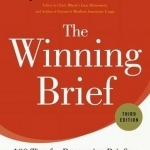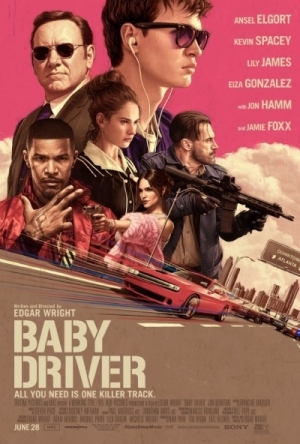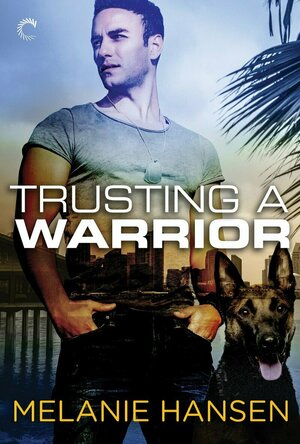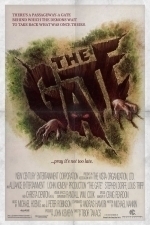Phillip McSween (751 KP) rated Baby Driver (2017) in Movies
Feb 1, 2020
Acting: 10
Beginning: 10
Characters: 10
It’s really hard not to love main character Baby (Ansel Elgort). Sure he’s helping criminals do criminal things but he has a great story and a solid motive. From the minute he shows up on screen beating his steering wheel to the music, you immediately want to root for this guy. Baby answers to Doc played by Kevin Spacey who reads the role with a controlled seriousness that forces you to focus on his every word. Doc along with an interesting gang of thugs make for a solid supporting cast.
Cinematography/Visuals: 10
Whether it’s two lovebirds in a diner talking or a death-defying car chase, I really appreciate the way Edgar Wright uses different angles to capture the perfect moment. I don’t know how he did it, but the movie has an 80’s feel to it even though it takes place in modern day. The action sequences play out in amazing fashion on screen and keep the story moving.
Conflict: 10
So many angles to consider here. Will Baby get out of the game? Does he get the girl? Will the next heist be a success? Something seems to always be happening whether at the forefront or in the background. This is a movie where you can get up to grab a drink and totally miss something you wish you hadn’t. Not to mention Baby Driver seriously has some of the best car chases in film period.
Entertainment Value: 10
It’s a movie that makes The French Connection car chase look like amateur night. There is so much going on, so many layers, that you will be hardpressed to be bored. It has the feel of an indie with blockbuster moments.
Memorability: 10
Pace: 10
Moves at an extremely high clip. Even the dialogue scenes can feel action-driven at times due to the intensity of the conversation. It’s a movie that never really lets you get too comfortable, but rather continues to hit you repeatedly with more.
Plot: 10
Resolution: 8
While the ending is the weakest point of the movie, it doesn’t detract from the overall greatness of Baby Driver. I wasn’t blown away by the resolution, but it was complete enough to get a pass from me. Good, but not lifechanging.
Overall: 98
In addition to having great action, Baby Driver’s love story helps drive the movie (pun intended) as a whole. It’s movies like these I wish would get more love from the Academy as they help to keep the population in love with film. Proud to call this movie a classic.
Kristy H (1252 KP) rated The Friend Zone in Books
Mar 19, 2020
The Friend Zone is one of those books that has been everywhere, but I clearly wasn't paying total attention to the plot. This is not your standard rom-com. The last note in my bookly app for this book reads, "fun sad enjoyed," and that really sums it all up. I found this one to be wonderfully written, much sadder than I expected, richly witty, rather dirty, and quite an enjoyable read. It wasn't at all what I went in expecting, but it was really more. Apparently there's a second book coming out soon, delving more into Sloan's story, and I'll certainly be reading that too.
Kristen is a tough character. She drove me crazy at first. I'm not a fan of books where so much could be resolved if someone just told someone else their secret. Sure, they may have their reasons for not wanting to spill, but good grief. Enough already! Luckily, Kristen was also a self-made businesswoman, really funny, a fully-fleshed out character, and easy to get hangry, which I could identify with (perhaps too much). She's a trip.
The friendship between Sloan and Kristen is a great part of the story--it's nice to see two women have a relationship that isn't marred by in-fighting or one that isn't based just on boys. It's real and flawed and, like much of the book, has its funny and sad moments. Josh is also a wonderful character, and, truly, he was a patient guy. The book's coverage of infertility is, mostly, quite well-done.
Overall, this was a strong read: funny and heartbreaking while featuring two characters with strong voices. It covers several serious topics without losing its way, and it's nearly impossible not to root for the main couple, even you want to shake Kristen once in a while. 4 stars.
Debbiereadsbook (1449 KP) rated Shadow and Light (Arizona Raptors #3) in Books
Mar 30, 2020
This is book three in the Arizona Raptors series. It says that it is not a stand alone and you should read books one and two first, however, I don't think its entirely NECESSARY, but it certainly would help. I have read those two books, and they were both solid 4 star reads.
THIS one, though, is a whole different kettle of fish!
I LOVED this book!
You feel for Henry. His life has taken a turn he didn't expect. The man who was using him, almost killed him. His money is all gone, and he is living in someone else's house, mansion, all by himself. His hockey is on the line, because of the accident and his mind is on a downward spiral.
Enter Apollo.
Apollo is the best friend of Adler, the man paying for the house, who is Henry's brother's friend. Apollo is at a loose end since Adler is all loved up, and Apollo needs some sun. So Apollo goes to Arizona to look after Henry while he gets backs on his feet and back onto the ice.
Apollo is just the kind of man Henry wants, but who would want a washed up hockey player who might go blind? Apollo clearly wants Henry, but he is supposed to be going home at the end of the summer. Can he let his heart take the break?
This one is my favourite of the three, it really is.
It had me crying in places, laughing in others. Shouting at the kindle, and cheering away. I wanted to wrap Henry up in cotton wool and I wanted to smack him upside the head. Apollo too!
There are numerous references to The Harrisburg Railers players and pop ups from all the major players and team from this series. I loved that.
The relationship between Apollo and Henry is slow and sweet, and I loved that. They grow into each other, you know, as the book progresses. It's beautifully written, and gave me so many feels!
Ryker Madsen is Henry's team mate, he plays the same line (although, to be honest, I have no idea what that actually means, I just thought someone MIGHT!) and HIS book was in the Owatonna U Hockey series. I did NOT like Ryker in that book. He does redeem himself in that series somewhat, but HERE? As Henry's best friend, that kid done good! So, as a totally irrelevent point, Ryker? I forgive you!
So, my favourite of the three so far, but I know there is one more out later this year.
5 stars
**same worded review will appear elsewhere**

iBP Blood Pressure
Medical and Health & Fitness
App
What is iBP? iBP is a blood pressure tracking and analysis tool. Please note, it is not possible to...

The Winning Brief: 100 Tips for Persuasive Briefing in Trial and Appellate Courts
Book
It its first two editions The Winning Brief explained the art of effective writing in 100 concise,...

Foxit PDF Business & Converter
Productivity and Business
App
Want a business-ready PDF reader? Try Foxit MobilePDF Business. This is an easy-to-use PDF reader...

Bonita Avenue
Book
A darkly hilarious tale of a model family's disintegration. Professor Siem Sigerius - maths genius,...
Debbiereadsbook (1449 KP) rated Trusting a Warrior (Loving a Warrior #3) in Books
Nov 26, 2020
This is book 3 in the Loving A Warrior, and I STRONGLY suggest you read both books one, Loving A Warrior, and book 2, Keeping A Warrior, before you read this one. There is much referenced here that is not fully recapped. And you know, cos I said so! Both are 5 star reads.
As is this one!
Lani meets Geo on possibly the worst day of her life. Geo's ain't much better. Together they begin to navigate a relationship, while dealing with a huge amount of grief at the death of their loved ones.
Hansen has a knack of roping you in, pulling you close, and not letting you go. She can grab you, by the heart strings, and drag you kicking and screaming through every single emotion known to man, and then expect you to write a coherent review after!
I mean, I loved this book, I really did. It carries some difficult story lines, but again, Ms Hansen delivers them in a way that you cannot fault. Grief is a fickle thing, and everyone deals with that differently. I know, my sister and I dealt with my mother and father's death very different, but there is no right or wrong way. Here, Lani's grief is a decade old, but she still suffers. Geo's is much fresher, and it's HIS pain that hit me the most.
I have no personal experience of war, or those who serve. I can only imagine the horrors that are presented on a daily basis. It's to be expected that some will struggle with that, but put on a "brave face" The way Hansen describes Geo's grief and his own spiral downwards is heartbreaking, it really is. Only his relationship with Lani saves him.
I loved how the others in this series; Matt and Shane and Rhys and Devon, play a huge part here. I loved that Devon and Lani become such good friends, even if Lani is Rhys' ex.
What I want to know now, Ms Hansen, is this! Will we be privvy to want happened in Keeping A Warrior, and here, to Matt and Shane?? Cos let me tell ya, I does NEEEEEEEEEEEEEEED to know! We get an inkling of what Matt suffers here, but not enough. So, please, write a followup!
Love, love LOVED the epilogue! And I loved Bosch, Geo's military dog.
I can't, in any honesty, give this book any less than. . .
5 stars
**same worded review will appear elsewhere**
Andy K (10823 KP) rated The Gate (1987) in Movies
Sep 29, 2019
All seems well enough until the boys split the geode and it spurts out some ancient writing that Glen reads aloud. Al decides to have a party while her parents are away (go figure) where Glen is levitated during a mini seance. Terry discovers during one of his headbanging sessions some of these events coincidentally are said to open a demonic gate where strange creatures can emerge, torment those they find and ravage the Earth.
The three protagonists decide to try and close the "gate" by reading ancient text and Bible verses. This proves successful and small, feisty demons begin to appear and creep into their house. After several run ins, more unusual things start happening within the home, possibly as a precursor for something even bigger on the horizon.
The teens must formulate a plan to dispose of their new house-guests before it is too late!
Funny that Glen is played by a very young Stephen Dorff in his very first role. He reminds me of a young Ethan Hawke in Explorers as his nerd friend Terry reminds me of River Phoenix in the same film.
The movie is cheesy with dated special and optical effects that modern audiences might get annoyed by or find lame and of poor quality. The small demons are more funny than they are scary, but I still enjoyed seeing them on screen. I actually thought it was stop motion animation similar to a Ray Harryhausen film like Clash of the Titans, but they were actually actors in demon costumes and then shot in forced perspective to make them seem smaller.
The movie is only 85 minutes and the plot does take a little while to get going. The first half of the movie is more like every 80's movie you have ever seen with dated hairstyles, clothing and dialogue, but once the demon stuff manifests it becomes more interesting.
Even though PG-13 with some semi scary moments, the movie does seem the style of Gremlins meaning maybe aiming more for a younger audience rather than being excessively disgusting or graphic.
Hopefully you can put aside the elements I mentioned that aren't up to today's standards and enjoy the cute, interesting story this film inhabits. I surely did.

File Browser & Manager Pro for Web and Cloud
Productivity and Utilities
App
With iDownloader PLUS, you can achieve high-speed file downloads from websites direct to your...





Ronnie (304 KP) Feb 1, 2020